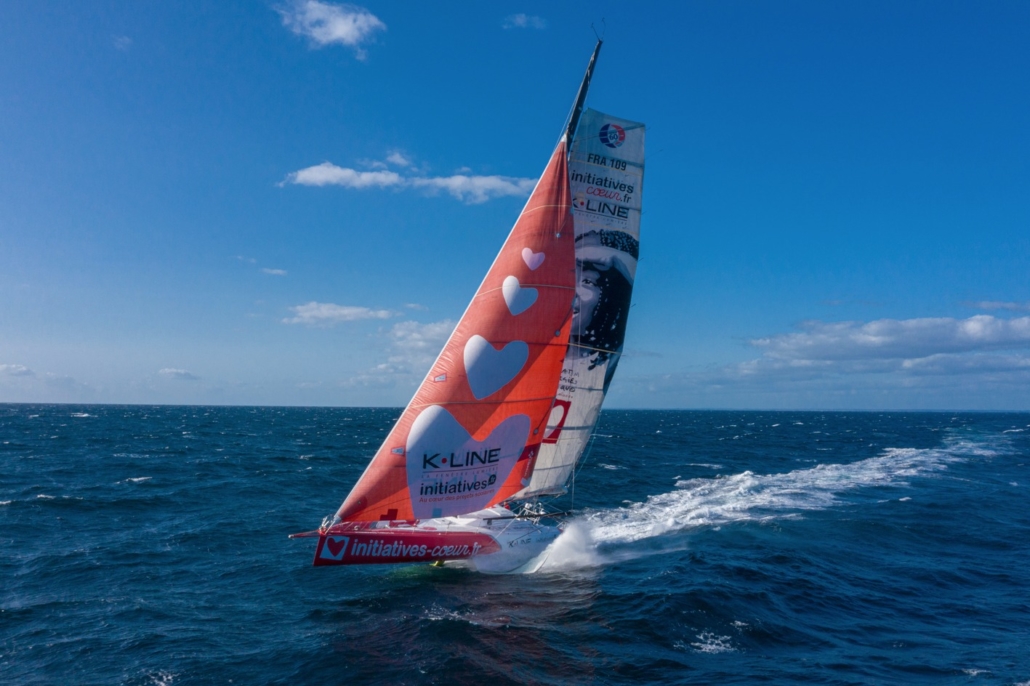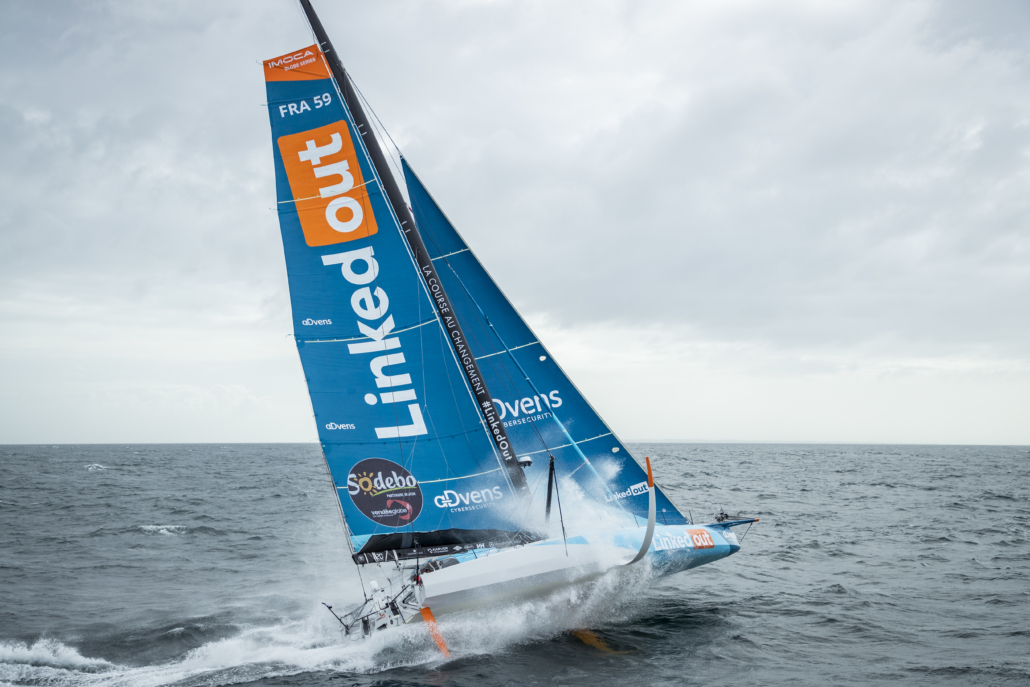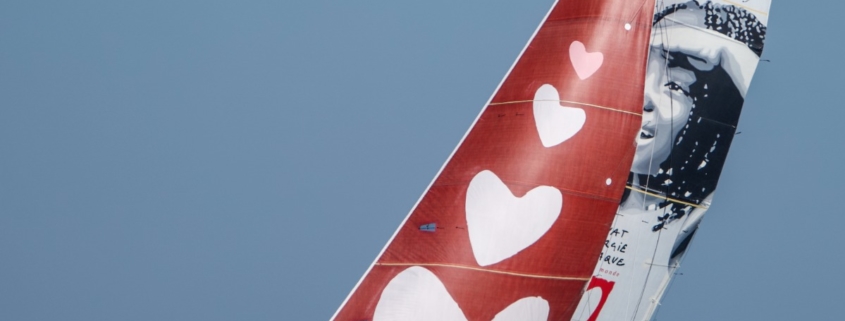The IMOCA plateform of the Jacques Vabre, deciphering and evolutions by Guillaume Verdier
Guillaume Verdier is one of the leading naval architects in the IMOCA class. He gives us his analysis of the evolution of the class, since its beginnings in the circuit in 1997, but also his opinion on the forces at work.
How has the classroom evolved and what architectural changes have we seen since the last generation-euro?
These are step-by-step advances. As an Open Class, the IMOCA allows us to propose things freely. What is proven ends up being adopted by others. It’s a Darwinian selection of evolutions. The competition pushes for that. The architecture and sailing techniques that dominate continue.
I started working on IMOCA boats in 1997, as an employee of the Finot group. We designed PRB, the boat with which Michel Desjoyeaux won the Vendée Globe twice. It already had pivoting daggerboards, rotating rudders, and a rotating mast. They were already complicated boats at that time. It hasn’t changed much in that respect.
Michel had asked us to protect the sailors while sailing. So we made a very protected cockpit. Yves Parlier, on Aquitaine Innovation was very exposed, but his boat was fast and light.
You have to take risks to protect yourself and be better. In general, it pays off. A large part of the architecture for single-handed sailing must be focused on the fact that the sailor must be able to use his machine. But these are difficult boats.
One of the big technological evolutions comes from the America’s Cup. I worked for Team New Zealand. We were the first to fly boats upwind and downwind with foils. I proposed that on Safran 2 in 2015.
The last generation of foils has grown a lot. I designed my first big foils for Sam Davies. They were bird’s wing shaped planes. There are ways to make the boats even more efficient, but the rules limit the size of the foils. It allows the older boats to stay in the game a bit.

I think it’s a shame not to use load-bearing planes on the rudders. It would allow us to have less jolts and to be more serene on board. These boats are very violent for the sailors. Since the foils, they are quite hard. The next generations will have to be easier to handle to be effective.
Another evolution, today, we put fiber optics everywhere in the boat. It’s a bit like a nervous system. It allows us to analyze the boat and its use: when it hurts, when we should lift the foot, when we should pull less. You can see some amazing things. There are alarms everywhere.
The environment has also become much more professional. The boats launched almost directly. Sailors train beforehand on simulators. We have optimizers who find the optimal configurations. Before, we had to feel our way around. Now, we give them an instruction manual.
In terms of aerodynamics, newer boats have less fabric than previous generations. Having less fabric in the air allows for more aerodynamics. We study this characteristic more, but the boats don’t go super fast. In the America’s Cup, the boats go 100 km/h. In IMOCA, the wind comes more from the side, the aerodynamics of the shape is less important than in the America’s Cup.
The quality of construction has evolved a lot. It’s amazing. It’s innovative. When you see the inside of a boat, it’s a work of goldsmiths. Every ply has been cut with the utmost care and laid to within a few millimeters. Everything is inspected, with ultrasound tests. The level of attention has increased.
Is there an evolution in the demands of skipperseuros?
Yes, but that was already the case. The request to make more workable boats, I’ve always heard. It’s always been a major issue. But still wanting the fastest boat first. They want the fastest machine, but also the most usable. It can only be done the other way around.
It’s tempting to have the most comfortable boat, the one that makes the least noise, the most solid, with the lowest center of gravity. You have to make choices and often go down one path or another to make a good boat, and try to be consistent.
You can’t sacrifice everything for comfort: strength, weight. It has to be a seamless whole. Like an airplane. We have to find a seamless balance in our response. We try to guide them.
What are the future developments, especially for the next editions?
I hope they will stop trying to standardize the boats. We are in the middle of a technological revolution. It’s interesting with a lot of development. We are held back by the fear of increasing costs. But by choosing one-design for certain elements – boom, jacks – the sponsors will leave.
It’s a real attraction to have diversity. To have a multitude of architects, who make different choices and boats that don’t look the same. That makes it interesting. The Vendée Globe is not just about one person sailing around the world. It’s an architectural and technological race.
I hope they will allow the planes on the rudders. It will take time, but there is no problem to do it. We’ve been flying boats on simulators for four years now. After that, it’s not necessarily a method of sailing for solo sailors.
The Transat Jacques Vabre is a double-handed race. How to adapt a boat for the different race configurations: double-handed, single-handed, crewed?
The sails are not the same for single-handed or crewed sailing. In the first case, you take sails that are self-regulating. They are not too hard to trim and even if they are badly trimmed, they push the boat forward. Crewed sails are much more efficient, but must be properly trimmed to be so.
We also adapt to the routes we take. We don’t sail the boat in the same way. Double-handed sailing is a bit like solo sailing. It’s a single-handed boat with one quarter out of two.

OFF Groix – October 6: French skippers Thomas Ruyant, sailing on the Imoca LinkedOut, training prior for the vendee globe, on October 6, 2020, off Groix, South Brittany, France – Photo Pierre Bouras / TR Racing
With the new Transat Jacques Vabre courses, will some hull designs/boat designs be more advantageous than others?
We see boats that are very hard to sail, not very stable in heel. They are harder than others in their balance. We try to design hull shapes so that it “self-drives”. We don’t necessarily have the lowest drag, but we are stable enough to take over from the foil when it stalls. This is my hull philosophy. I let the others make their choices.
Among the forces in presence, which are those who have the most atouteuros? Boats and skipperseuros?
There are quite a few. There are a lot of experienced sailors. I think Apivia with Charlie Dalin have shown that they are well in tune. Thomas Ruyant is top too.
There are a lot of great sailors, and not only on boats I designed. Jérémie Beyou for example is very good. Yannick Bestaven too. There are many favorites. It’s great. We must not underestimate anyone. The race is not just about the boat, there are also a lot of weather choices to make.
Source @BoatsNews.com



